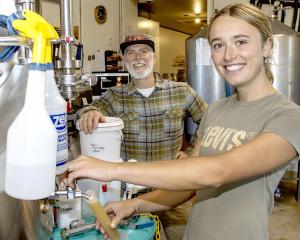Selwyn is the first council in New Zealand to decide the direction its water services will take.
The “generational decision” was reached in a split 6-5 vote on Wednesday. It follows months of work, three weeks of public consultation, and about five hours of deliberations to investigate the best way forward for Selwyn’s drinking water, wastewater and stormwater management.
Two options were on the table: Set up a new company or keep it in-house. The decision was in response to new Government legislation - Local Water Done Well.
Council staff recommended a water services council-controlled organisation (WSCCO) model for the district's drinking water and wastewater, while keeping stormwater management in-house.
Mayor Sam Broughton, deputy mayor Malcolm Lyall, and councillors Nicole Reid, Shane Epiha, Phil Dean and Sophie McInnes voted for a WSCCO.
Councillors Grant Miller, Debra Hasson, Bob Mugford, Lydia Gliddon and Elizabeth Mundt voted against a WSCCO.
Broughton said being the first was a way of "staying ahead of the game" and not being forced into something else such as another CCO not controlled by Selwyn.
"New regulatory requirements have directed the council to change the way we deal with our water services.
"Our councillors, after weighing up all available information, expert opinions and community views, feel that an independent specialist water services organisation, fully owned by the community, will best service our district for generations to come," Broughton said.
Other Canterbury councils either want to retain an in-house model or work in smaller groups.
Said Broughton: "Canterbury should be working together; we asked all of our neighbours to work together; we should have a regional deal."
Being alone in the WSCCO space was a reason Gliddon voted against it.
"If there was a Canterbury-wide CCO, I could understand the economy of scale," Gliddon said.
Councillors who voted against the WSCCO cited the 86.1% of 423 public submissions in favour of keeping water services under direct council control.
Public concerns about the WSCCO include potential higher costs, the risk of privatisation, and reduced local control.
Staff said eventually a WSCCO would be the more affordable option, could never be sold to anyone apart from the council and would still maintain community voice through a statement of intent.
Council predictions showed the in-house model was still likely to be about 10% more expensive than the current costs in order to comply with the yet-to-be-finalised Government legislation.
In the short term, the WSCCO will be more expensive due to increased setup costs. On current estimations in 2025/26, it will be 10% more expensive, increasing to 14% more in year two and 35% in year three.
However, by 2033/34, the WSCCO model is expected to be between 2-7% cheaper a year than keeping water services in-house.
On the assumption 50% of the council’s spending is related to water, both an in-house model and a WSCCO would have about the same budget, even with the WSCCO having a 500% debt limit compared council’s current debt of 280%.
Staff told councillors during deliberations last week the main difference will be a WSSCO having the debt solely focused on water infrastructure as opposed to an in-house model where water services will have to compete with other capital projects such as roading and community facilities.
The council will now work towards delivering a water services delivery plan for Government approval by September 3.














